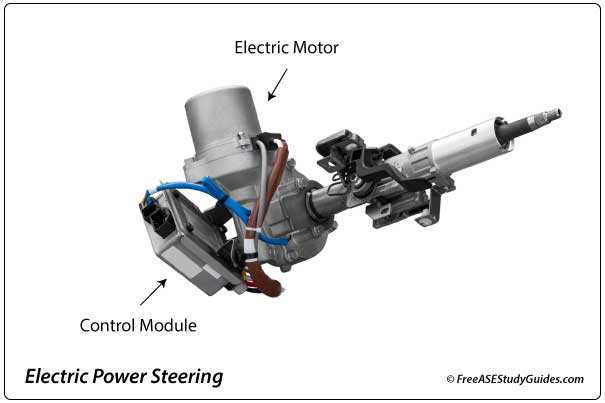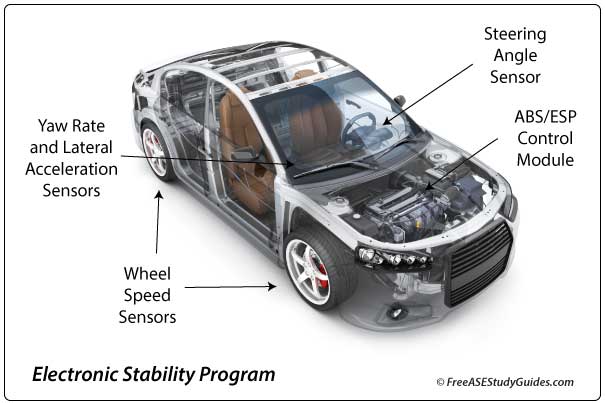Electric Power Assist Steering

Many late-model vehicles have EPAS Electric Power-Assist Steering that uses an electric motor instead of a pump and hydraulic pressure to provide power steering assist. The EPAS control module uses steering and speed sensor inputs to adjust the direction and amount of assistance.

The motor is on the steering column or the gear. An electromechanical unit is entirely electric, and no hydraulic fluid is required. An electrohydraulic unit has a motor that drives a pump. The belt-driven pump associated with a typical hydraulic power steering system is no longer needed. The alternator provides the voltage required for operation instead of the crankshaft. It's economical, offering higher fuel mileage.

A control module receives inputs and controls the motor. It may be dedicated or combined into a single unit with the suspension module. It receives input from the steering wheel torque and angle sensors, indicating the speed and effort required to turn the wheel. The module uses this and vehicle speed sensor input to control the motor.
Power assistance increases during parking maneuvers and slow speed operation and decreases, providing a tighter feel approaching highway speeds. While test driving a vehicle with EPAS, the steering should feel progressively tighter as vehicle speed increases.